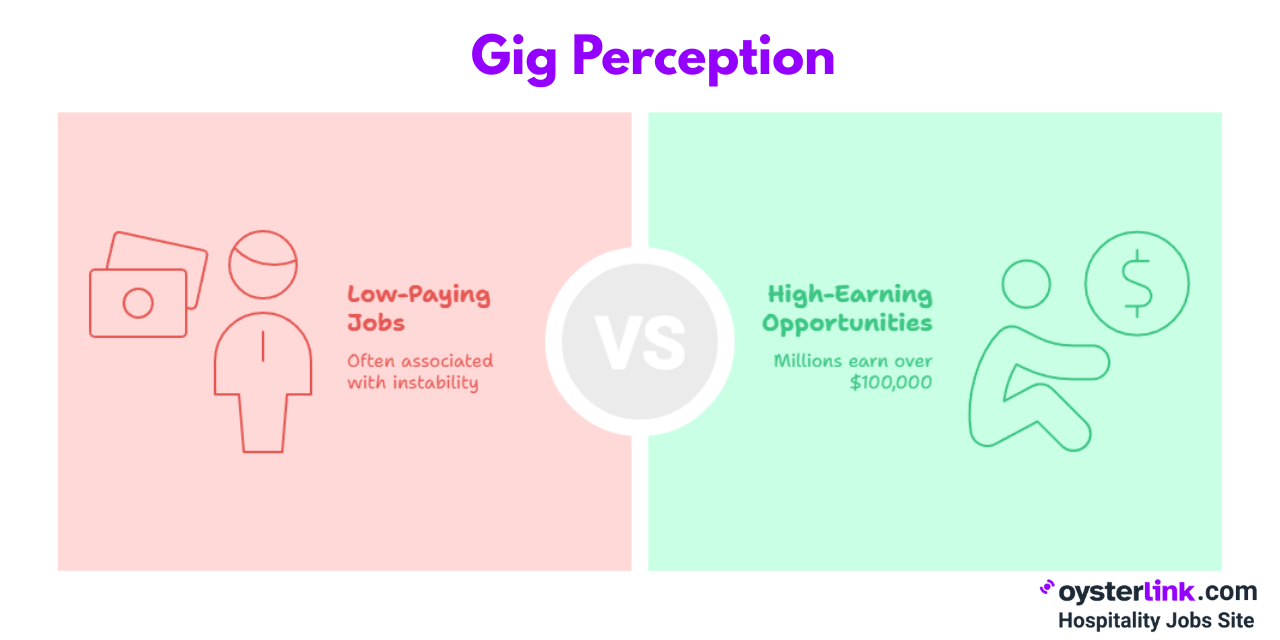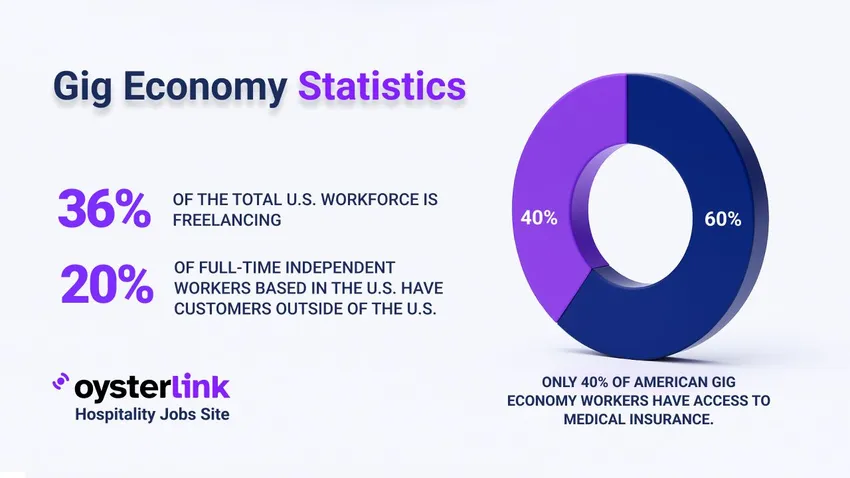The gig economy — a labor market characterized by short-term contracts, freelance work and independent contractors — has rapidly grown to become a significant force in the United States.
As we progress into the second half of 2025, this sector continues to reshape the way millions of Americans earn a living, offering both unprecedented flexibility and new challenges.
This article will explore the key statistics that define the gig economy in 2025, providing insights into its size, earning potential, geographic distribution and future outlook.
Freelancing Nation: One-Third of the US Workforce
Currently, around 59 million Americans freelance, accounting for roughly 36% of the total workforce.
By 2027, it's projected that nearly 87 million people — about half of all workers in the country — will be freelancing.
This shift signifies a major transformation in the American labor market, where traditional full-time employment is increasingly being supplemented or replaced by independent work.

Several factors are driving this expansion. Technological advancements have made it easier than ever for individuals to connect with clients and manage their work remotely.
Economic factors, such as the desire for greater flexibility and control over one's income, are also playing a significant role.
For many, freelancing offers the opportunity to pursue passions, set their own hours and escape the constraints of a traditional 9-to-5 job.
Lucrative Gigs: High-Paying Gig Economy Jobs
The most lucrative gigs in the economy can vary, but certain roles consistently stand out for their earning potential.
For example, massage therapy ranks as the highest-paying gig in the United States, with an average rate of $27.34 an hour.
Other well-paid options include freelance software development, graphic design and consulting services — all offering strong earning opportunities for skilled independent workers.
The key to maximizing earning potential in the gig economy often lies in acquiring in-demand skills and specializing in niche areas.
This allows workers to differentiate themselves, command higher rates and attract clients willing to pay a premium for expertise.
High Earners in the Gig Economy: The $100K+ Club
While the gig economy is often associated with low-paying or unstable jobs, the reality is far more nuanced.
Recent data shows that over 4.7 million independent workers in the U.S. earned over $100,000 in 2024 — marking a significant rise from 3 million in 2020.
This data point challenges the notion that gig work is solely for those seeking supplemental income or struggling to find traditional employment.

These high earners demonstrate the potential for significant financial success in the gig economy.
Professionals with specialized skills in areas like technology, marketing and consulting can command premium rates for their services, building thriving businesses as independent contractors.
It provides hope to many that there is potential for high earnings, as well as the flexibility to choose when, where and how they work.
Gig Work Hotspots: Geographic Concentrations
The distribution of gig workers varies across the United States, with some areas having a larger count than others.
Florida leads with the highest concentration, where approximately 22% of the workforce is engaged in gig work. California follows closely with 20%, while both Texas and Illinois have about 18%.
These states tend to have large, diverse economies, thriving tech sectors and a generally business-friendly environment.
They also attract a significant number of young professionals and entrepreneurs, who are often drawn to the flexibility and opportunities that the gig economy provides.
Global Reach: The US as a Gig Economy Leader
While the gig economy is a global phenomenon, the United States has emerged as a dominant player in this space.
The U.S. has the highest global market for gig workers, but India, Indonesia, Australia and Brazil are rapidly growing, strong markets.

The U.S. benefits from a combination of factors, including a large and technologically advanced economy, a culture that values entrepreneurship and innovation and a highly skilled workforce.
However, as other countries continue to invest in technology and infrastructure, they are rapidly catching up, creating a more competitive global landscape for gig workers.
Beyond Borders: International Clients
The rise of remote work has expanded the reach of gig workers beyond national borders. A significant 20% of full-time independent workers based in the U.S. have customers outside of the U.S.
This ability to serve international clients opens up new avenues for income and growth, allowing gig workers to tap into a global pool of opportunities.
This trend is driven by online platforms, translation tools and enhanced communication technologies, which make it easier than ever for freelancers to connect with clients globally.
It also allows companies to hire specialized talent without the overhead costs associated with traditional employment.
The Gig Economy Safety Net: Access to Healthcare
Despite the many benefits of gig work, it's important to acknowledge the challenges and potential downsides.
One of the most significant concerns is the lack of access to traditional employee benefits, such as health insurance.
Only 40% of American gig economy workers have access to medical insurance.

This lack of a safety net can create significant financial vulnerability for gig workers, as they are responsible for covering their own healthcare costs.
As a result, there have been growing calls for policy changes to address the issue.
Proposed solutions include the creation of portable benefits that move with workers from job to job, as well as subsidized healthcare options specifically designed for independent contractors.
Gig Economy: Future Outlook
Despite the challenges, the overall outlook for the gig economy remains overwhelmingly positive. 86% of freelancers think that the best days for freelancers are yet to come.
This optimism reflects a belief that the gig economy will continue to evolve and provide even greater opportunities for independent workers in the years ahead.
This continued growth requires the best efforts of policymakers, business leaders and gig workers to build a future that provides a good income, job satisfaction and benefits to workers.
Methodology
The statistics presented in this article are derived from several recent surveys and research reports focused on the gig economy in the United States.
Key sources include reports from Statista, MBO Partners, App Jobs, Upwork, ADP, Mastercard and Edison Research.
These sources provide data on the size of the gig workforce, earnings, geographic distribution, access to benefits and worker sentiment.









Loading comments...